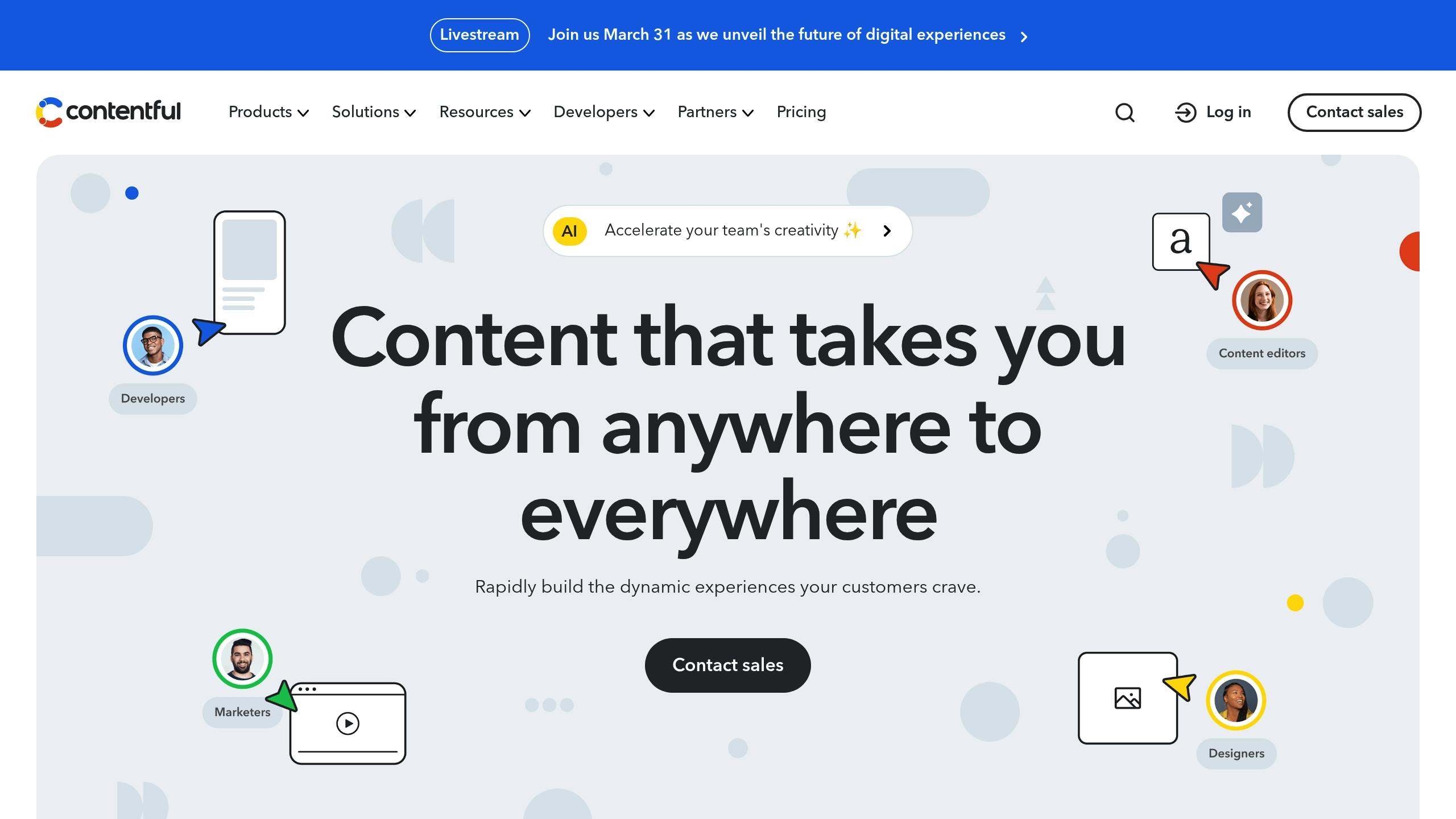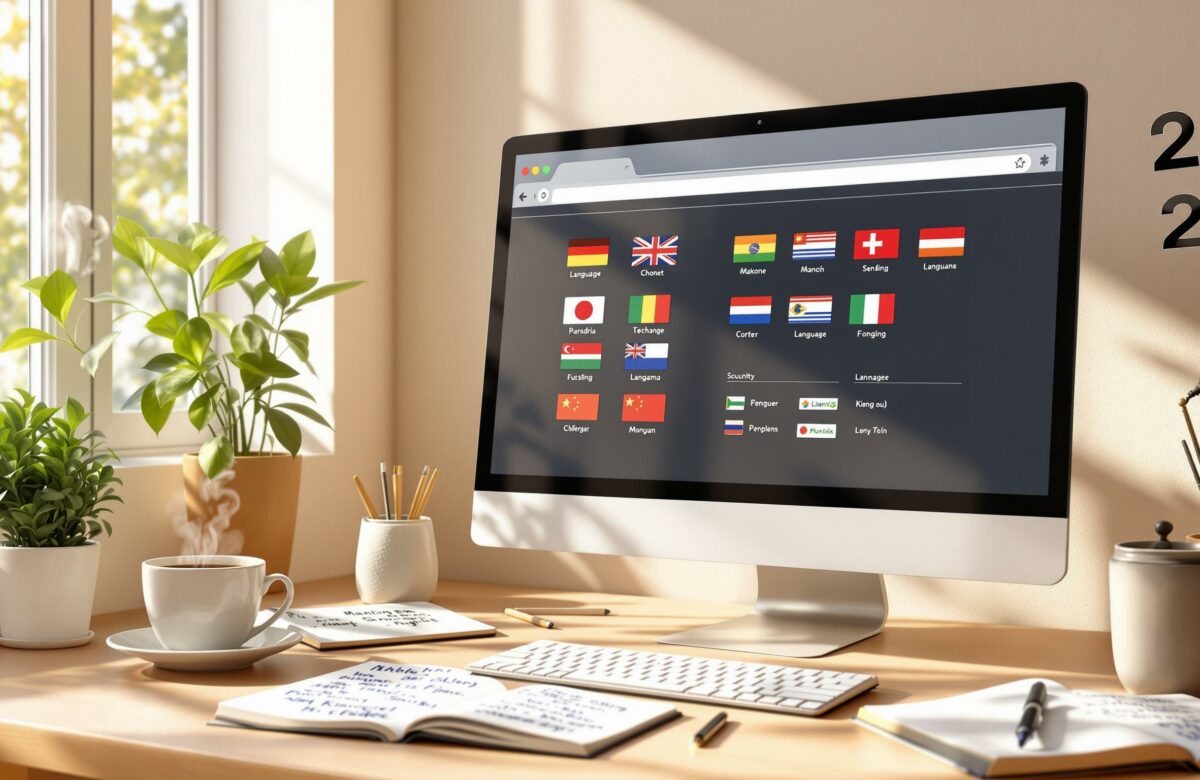How To Choose A Multilingual CMS For Business
How to choose a multilingual CMS for business? Language-specific versioning in CMS platforms allows you to manage content revisions independently for each language. This ensures that updates do not interfere with other translations and helps maintain relevance across cultural contexts. If you are wondering how to choose a multilingual CMS for business, this guide will help you compare top platforms and find the best fit for your needs.
Key Features Across CMS For Business Platforms
- WordPress (with WPML): Independent backups, language fallbacks, and staging environments for testing.
- Drupal: Built-in multilingual capabilities with interface, content, and configuration translation.
- Adobe Experience Manager (AEM): Advanced tools like Translation Framework, Multi Site Manager, and translation memory for enterprise needs.
- Contentful: API-first design with localization fields, fallback languages, and seamless integration with translation services.
- Sitecore: Ideal for large-scale projects with separate content trees and automated workflows.
CMS For Business: Quick Comparison Table
| Platform | Best For | Key Features | Challenges |
|---|---|---|---|
| WordPress (WPML) | Small to medium websites | Language fallbacks, backups, and staging environments | Requires plugins for multilingual support |
| Drupal | Technical teams | Built-in translation features, revision tracking, and RTL support | Complex setup for non-technical users |
| AEM | Enterprise organizations | Translation memory, API integration, and scalable workflows | High cost and resource-intensive |
| Contentful | Flexible, API-driven needs | Localization fields, fallback languages, and webhook automation | Requires technical expertise |
| Sitecore | E-commerce and global sites | Personalized multilingual experiences and automated workflows | Managing separate content trees |
Choose a CMS for business based on your content volume, update frequency, technical resources, and budget. Start with a pilot project to test workflows before scaling up.
Pro Tip: Start with a pilot project to test workflows before scaling up.
Headless CMS vs Traditional CMS
1. CMS For Business: WordPress with WPML

WordPress paired with WPML allows you to manage separate language versions of your site, making it easier to handle multilingual content. To keep things running smoothly, here are some tips:
- Set up language fallbacks: Display default content when translations aren’t available, ensuring no empty pages for your users.
- Automate backups for each language: Protect your work by creating backups for every language version, reducing the risk of losing data.
- Conduct regular version checks: Keep content aligned across languages and avoid conflicts by auditing versions consistently.
- Test updates in staging environments: Before rolling out major changes, test them in a safe staging area to prevent issues on your live site.
2. CMS For Business: Drupal

Drupal comes with built-in multilingual capabilities through the Content Translation module, introduced in Drupal 8. This means you can handle translations directly without needing extra plugins.
Here are some of its standout multilingual features:
- Interface Translation:
- Detects browser language preferences automatically
- Supports right-to-left (RTL) languages
- Keeps separate interface strings for each language
- Content Translation:
- Allows you to create specific content versions for different languages
- Retains metadata and consistent URL structures across translations
- Configuration Translation:
- Let’s you translate elements like menus, taxonomies, views, and blocks
Drupal also includes a robust revision system. It tracks changes by recording timestamps, author information, and update history. Importantly, revisions apply to the entire content entity rather than just individual language translations.
For better performance when managing multilingual content, you can use Language Detection and Fallback Settings to select a default language for content and provide alternatives when translations aren’t available.
Next, let’s take a look at how Adobe Experience Manager handles multilingual content.
3. CMS For Business: Adobe Experience Manager

Adobe Experience Manager (AEM) takes multilingual workflows to the next level with its Translation Framework and Multi Site Manager (MSM). These tools are designed to handle large-scale, complex environments with ease through automated and scalable workflows.
Key Language Management Features:
- Language Copy Creation: Creates copies that mirror the original structure, ensuring consistent site navigation.
- Translation Projects Dashboard: A centralized hub to monitor translation tasks, track progress, and manage deadlines.
- Smart Content Detection: Differentiates between content that needs translation and elements that can remain unchanged.
Integrated Translation Workflows:
- Direct API Integration: Seamlessly connects with major translation providers like Lionbridge and Translations.com.
- Version Control: Automatically tracks translation versions and maintains detailed audit trails.
- Translation Memory: Utilizes previous translations to speed up and simplify ongoing projects.
Content Synchronization with MSM:
The Multi Site Manager ensures smooth synchronization of language versions through:
- Automated updates for structural changes.
- Selective inheritance of content where needed.
- Independent publishing workflows tailored to each language.
sbb-itb-32359dc
4. CMS For Business: Contentful

Contentful provides a headless content management system (CMS) that emphasizes flexibility through its API-first design. Like Adobe Experience Manager, it caters to enterprise needs but focuses on separating content from presentation, making it easier to manage multilingual content efficiently.
Key Language Management Features
- Localization Fields: Manage translations at a granular level, down to individual fields.
- Default Fallback Languages: Automatically display fallback language content when a specific translation isn’t available.
These tools make it easier to organize and manage multilingual content effectively.
Structuring Multilingual Content
Contentful’s content modeling system simplifies the organization of multilingual content:
- Reference Fields: Connect related content across different languages while keeping each version distinct.
- Rich Text Editor: Supports right-to-left languages and special character sets, making it suitable for diverse linguistic needs.
Translation Management via APIs
Contentful’s RESTful APIs streamline multilingual workflows through several key endpoints:
- Content Delivery API: Delivers localized content based on specific locale parameters.
- Management API: Handles the creation and updates of localized entries.
- Preview API: Allows testing of translated content before it goes live.
5. CMS For Business: Sitecore
Sitecore is an enterprise-level CMS platform designed to handle complex, multilingual projects. While it excels in such environments, managing language-specific versions in large-scale projects can be tricky and requires careful planning.
One of the main challenges is handling separate content trees for different languages while keeping translation relationships intact. This makes it harder to synchronize and update content across languages. On top of that, translation workflows often need to be managed independently for each language, requiring separate reviews and approvals, which adds another layer of complexity.
Platform Comparison
CMS platforms differ in how they handle translation workflows, language detection, content updates, version control, translation memory, and SEO features. Some offer automated workflows and real-time synchronization, ideal for large, fast-paced sites. Others rely on manual processes and API integrations, offering more customization.
When selecting a CMS, consider these factors:
- Content Volume: Large websites need systems capable of managing extensive content libraries.
- Update Frequency: If your site requires frequent updates, real-time synchronization is a must.
- Technical Resources: Simpler platforms are often more affordable, while advanced systems may demand specialized expertise.
- Integration Needs: Check how well the CMS integrates with your translation tools and workflows.
- Budget: Factor in both the initial setup costs and ongoing maintenance expenses.
Choose a CMS that aligns with your specific needs – whether it’s handling a large amount of content, frequent updates, or technical and budgetary constraints. Test the platform with a pilot project before committing to a full rollout.
Best Choice: If you need a website with simple multilingual support, go for WordPress WPML. If you need API-driven, scalable content, choose Contentful.
Conclusion: Which CMS is Right for You?
| Use Case | Recommended CMS |
| Small to Medium Websites | WordPress WPML |
| Enterprise Organizations | Adobe Experience Manager |
| API-Driven Needs | Contentful |
| E-commerce & Global Sites | Sitecore |
| Technical Teams | Drupal |
Final Tip: Test a pilot project with a few languages before committing to a full-scale rollout.
By carefully selecting a CMS that aligns with your content volume, update frequency, technical resources, and budget, you can build an efficient, scalable multilingual content strategy.
Frequently Asked Questions (FAQs)
1. What is a multilingual CMS For Business?
A multilingual CMS (Content Management System) allows you to create, manage, and display content in multiple languages. It ensures seamless translation management, language-specific SEO, and a better user experience for global audiences.
2. How do I choose the best multilingual CMS for business?
When choosing a multilingual CMS for business, consider:
- Built-in translation tools (WordPress WPML, Drupal, AEM, Sitecore).
- SEO-friendly features (hreflang tags, localized URLs, structured metadata).
- Content synchronization (automated updates across languages).
- Integration with translation services (Google Translate, Smartling, DeepL).
- Ease of use & budget (small businesses vs. enterprises).
3. Which CMS platforms are best for multilingual websites?
The best multilingual CMS depends on your needs:
- WordPress (WPML) – Best for small to medium businesses needing an easy setup.
- Drupal – Ideal for technical teams requiring full customization.
- Adobe Experience Manager (AEM) – Best for enterprises managing large-scale multilingual content.
- Contentful – Great for API-driven businesses with a headless CMS approach.
- Sitecore – Best for global e-commerce sites needing personalized multilingual experiences.
4. What SEO factors should I consider for multilingual websites?
To rank well in Google’s search results for multiple languages, optimize:
- Hreflang tags to indicate language versions to search engines.
- Localized URLs (e.g.,
example.com/fr/for French content). - Meta descriptions & title tags tailored for each language.
- Keyword research per region (avoid direct translations).
- Content relevance & cultural adaptation instead of just word-for-word translations.
5. What’s the difference between a traditional and a headless CMS for multilingual content?
- Traditional CMS (WordPress, Drupal) – Manages content and design together, making it easier for non-technical users.
- Headless CMS (Contentful, Strapi) – Separates content from presentation, delivering it via APIs for flexibility across platforms like websites, apps, and IoT.
6. How does a CMS handle automated translations?
Most CMS platforms support automated translation workflows through:
- Built-in translation tools (AEM, Sitecore).
- Third-party services (Google Translate, DeepL, Smartling).
- Machine learning-driven translations with memory to improve accuracy.
However, for quality control, human review is recommended to avoid translation errors.
7. How do I maintain content consistency across languages?
- Use language fallback settings to display default content if a translation is missing.
- Enable content synchronization across language versions.
- Track version control to ensure translated content remains updated.
8. How do I test multilingual content before publishing?
- Use staging environments to preview translations before going live.
- Enable language-switching tools to test different language versions.
- Run SEO audits to ensure hreflang tags and localized URLs are correct.
9. How much does a multilingual CMS cost?
CMS pricing varies:
- WordPress WPML – Starts at $99/year for multilingual support.
- Drupal – Free, but requires custom development.
- Adobe Experience Manager (AEM) & Sitecore – Enterprise-level pricing based on licensing and usage.
- Contentful – Offers free and paid plans (cost depends on API usage).
10. What are the common challenges in managing a multilingual website?
- Inconsistent translations across different language versions.
- SEO misconfigurations, such as missing hreflang tags.
- Cultural adaptation – Some content may need regional adjustments.
- Frequent content updates – Managing multiple language versions requires continuous synchronization.
Need help choosing the right CMS? Contact us today for expert recommendations!


